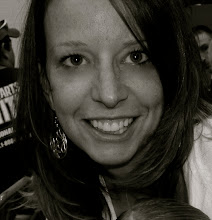Teachers can't be expected to be accountable if they are told specifically what to do. Accountability requires professional autonomy to do what's right. The best teachers are "not followers" and have an "independent spirit." Based on their professional and moral knowledge and judgment, they override directives when something else will work more effectively.I thought this spoke volumes of what we do in the classroom as a whole. The problem lies in the amount of slack we get for doing what we know to be best for our students. She touched on this later in the chapter when discussing the importance of having data as back-up. Not only do you need the data, but you also need "to be knowledgeable, courageous, and willing to speak up." This takes guts and the willingness to be shot down in front of a room full of your colleagues. For me, this has never been an issue, but I wonder if these words struck a chord with anyone else.
Another point that I thought was extremely important is to have professional dialogue about what we are doing at the building and district level. She focused on the building level throughout most of the chapter, so that is where I will start. We, as a building, need to set a common standard for what writing looks like in all our classrooms. Yes, different approaches can be taken, but our end result should be clarified so we are all aiming at the same target. Her example of weekly discussions across grade levels was very meaningful to me. In order to move forward, we have to take the time to scrutinize and improve upon our current practices as a community. Only after we all sit down together and come to a consensus, can our school-wide writing improve. As she stated on p274:
As a school, you will want to make decisions about such issues as quality versus quantity of writing, genres to include, ... , editing, spelling, publishing, and special education students. And once those decisions have been made, the beliefs and practices behind them need to be communicated to parents and caregivers effectively.There were some points that she made that I do not agree with, but as she stated: "Trust your professional common sense and your own successful teaching experiences."

3 comments:
I agree with you on most of this. I'm not one of those to speak up very often in meetings, so I can't relate to that. It would be nice to have a quality curriculum across the district when it comes to writing, As I hope we have that for all subject matter some day.
Yes, Rachel, this did strike a chord with me. I do hate to make my opinion known in front of a group and then have it shot down, not by teachers, but by individuals in power. Individuals who have the power to control our classroom practices. I liked your idea about setting a common standard on what writing should look like both district as well as building wide.
I agree that in order to make an impact we need to work together as a building and get everyone on board. The next step is to give it time and not expect a complete turnaround the first year, although I do think we'd see significant improvement. I know I've already notice a change in my students' writing just within the last few months.
Post a Comment